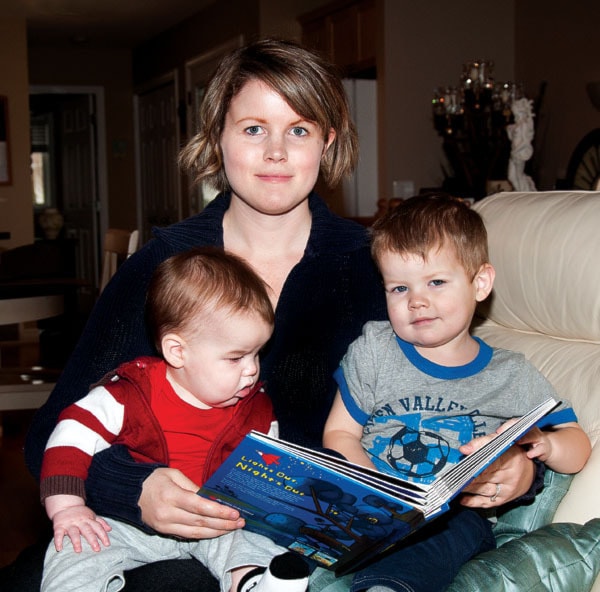The absence of a midwife in Salmon Arm continues to be a contentious issue on both sides of the argument.
Salmon Arm resident Stephanie Cannon has had two children and would like to have more; but she wants midwife care in her own community.
The mother of two had her first baby under the care of a midwife in Vernon and the second one last summer with a Kamloops midwife.
“This time, I wanted to have my baby at home; this makes it even more difficult as most of them don’t want to travel from Kamloops,” says Cannon, noting monthly trips to Kamloops became every week a few weeks before her due date. “This meant three hours of travelling and I had to put my toddler in daycare every time.”
Cannon maintains women get more personal care from midwives, know who will deliver their baby, have longer appointments and receive care until six weeks postpartum.
As well, Cannon says a midwife stays with her patient from beginning to end, not just showing up for the delivery.
But it’s the showing up part that concerns Interior Health.
Frustrated with the hospital’s reputation of being unsupportive of midwives, former chief of staff John Wickert says they are welcome to practise at Shuswap Lake General if they meet the criteria.
Chief among them is living within 15 minutes of the hospital, as is the regulation for other doctors who are granted hospital privileges.
“A midwife has to be responsible for patients and be part of the medical staff, which includes attending meetings and participating in department call schedules,” says Wickert, noting, no suitable candidate has applied since a Vernon midwife quit because even that distance was too difficult to manage.
“We look at candidates to make sure they’re safe. It’s all about the distance, we have no problem with the training,” he says. “We are trying to protect patients by preventing people from parachuting in and doing half the work.”
Peter du Toit, director of acute care services of the Thompson, Caribou, Shuswap region, says there is an IH directive for midwives to respond in time for the safety of both mother and baby.
“Patient safety is our top priority given the unpredictable nature of birth,” he says. “It can go wrong so quickly, and we don’t even know if the mom has a doctor here.”
Du Toit also emphasized that midwives are welcome at Shuswap Lake General.
“If someone is willing to move to Salmon Arm, that’s something the doctors and IH will sit down and work out, and Interior Health would support it,” he says, pointing out that in order to get privileges, all doctors go though the same process. “We look at references and quality of work and people have a pretty good feeling at end of discussion (about their acceptance.)”
Kelly Hayes, vice-president of the Midwives Association of B.C. says women in the province do not have reasonable access to midwife care.
“Unfortunately midwifery is a very small but growing practice in B.C. There are 200 currently and we need to grow that number,” she says. “But we need to have supports in place in order to do that.”
Hayes says a key component is having all the other stakeholders working together – family physicians, pediatricians, obstetricians, doulas, health authorities and government.
She notes the province’s midwifery model is becoming internationally renowned.
“We know from research when women have to leave their communities there is an increase in bad outcomes for mothers and babies. The research is showing clearly midwifery care reduces intervention rates, C-section rates, reduced stays in hospital and the outcomes are fabulous.”
